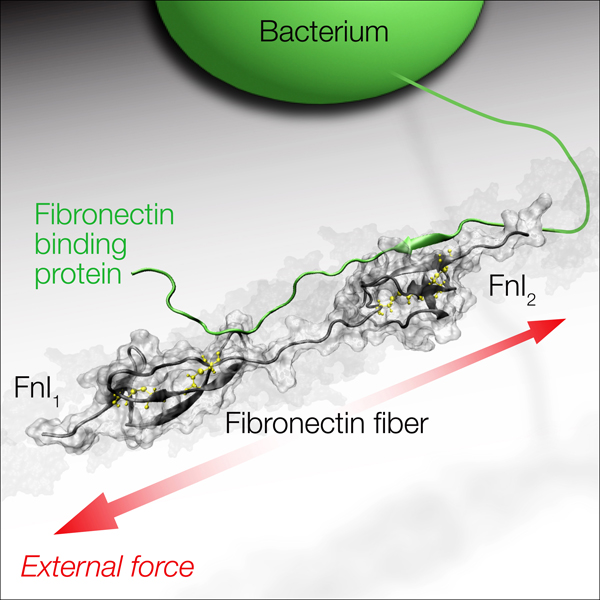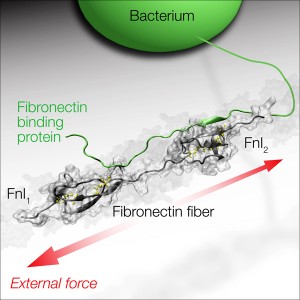Supercomputers Demonstrate how Bacteria Infect Wounds
The research group led by Viola Vogel, Professor of Biologically Oriented Materials at ETH Zurich, has studied with the help of supercomputers the mechanisms behind the infections of wounds. If connective tissue fibres are under tension, bacteria do not bind to them so well. However, if the fibres are severed and slackened by a cut, the bacterial adhesion molecules recognise this and attach themselves, which enables them to cause infections.
The knowledge that the tiny bacterium can recognise the physical state of a protein and that the stretching process changes the adhesion is essential to an understanding of biochemical processes. It involves one of the many interactions that are still undiscovered. Furthermore, only small elements of the entire adhesion region have been studied. “That is why we cannot say at present what long-term consequences the discovery will have – e.g. on the treatment of infectious diseases,” stresses Vogel. New computing time has already been requested at the Swiss National Supercomputing Centre CSCS in Manno, where the ETH Zurich professor carries out her modelling. She wants to resolve more questions, such as why different bacteria that bind to fibronectin have different numbers of adhesion molecules.


